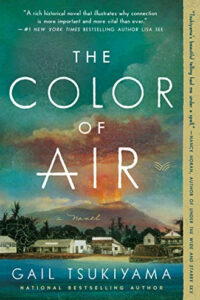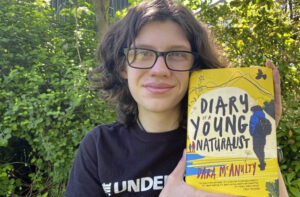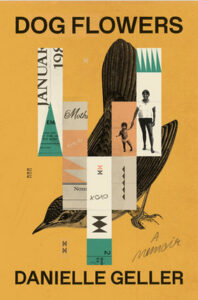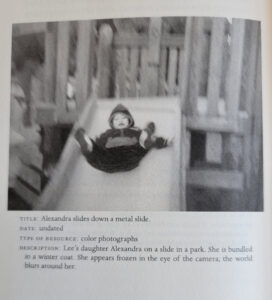My 5 favorite books of 2021 — and what they taught me about writing
 THE COLOR OF AIR (Gail Tsukiyama) is a quiet storm of a novel set in Hawaii. It’s a family saga that alternates between past and present, taking us into the lives of Portuguese, Chinese, Filipino, and Japanese immigrants who work the sugar cane fields. A volcanic eruption in 1935 (which really happened) figures prominently in the plot, and the volcano, Mauna Loa, is treated as a character in its own right. All of Tsukiyama’s novels are rich and subtle delights; this one is no exception. I feel lucky to have studied writing with her in a small workshop in California’s Napa Valley.
THE COLOR OF AIR (Gail Tsukiyama) is a quiet storm of a novel set in Hawaii. It’s a family saga that alternates between past and present, taking us into the lives of Portuguese, Chinese, Filipino, and Japanese immigrants who work the sugar cane fields. A volcanic eruption in 1935 (which really happened) figures prominently in the plot, and the volcano, Mauna Loa, is treated as a character in its own right. All of Tsukiyama’s novels are rich and subtle delights; this one is no exception. I feel lucky to have studied writing with her in a small workshop in California’s Napa Valley.
What this book taught me about writing: The drama of nature can compliment and underline a story’s human drama.
I LOVE YOU BUT I’VE CHOSEN DARKNESS (Claire Vaye Watkins) reminds me that you can love aspects of a book that also kind of  drives you crazy. Watkins calls this a novel, but her protagonist shares her name, and real letters from her mother are part of the story, as are excerpts from her real-life father’s book about his role as Charles Manson’s “number one procurer of young girls.” The book is set in a Mojave Desert filled with trailer parks and drug abuse. Her voice is the real draw: rawl and honest, blazing towards both wisdom and self-destruction. She’s also a little like a friend who’s fun on road trips but revels too much in the tales her own extremity. Think “Fear and Loathing in Las Vegas” meets “In the Glass Castle.”
drives you crazy. Watkins calls this a novel, but her protagonist shares her name, and real letters from her mother are part of the story, as are excerpts from her real-life father’s book about his role as Charles Manson’s “number one procurer of young girls.” The book is set in a Mojave Desert filled with trailer parks and drug abuse. Her voice is the real draw: rawl and honest, blazing towards both wisdom and self-destruction. She’s also a little like a friend who’s fun on road trips but revels too much in the tales her own extremity. Think “Fear and Loathing in Las Vegas” meets “In the Glass Castle.”
What this book taught me about writing: You can call a book a novel even when it’s obviously autobiographical. Why do that? Maybe to have more wiggle room in reshaping the narrative, to avoid lawsuits, or to genre-bust your way to that strange category called autofiction, short for autobiographical fiction.
 DIARY OF A YOUNG NATURALIST (Dara McAnulty) is a coming-of-age memoir by a 16-year-old autistic boy who basks in the beauty and wonder of the natural world. It’ll make you want to rush outside, rain or shine, to see the world through his starry eyes. Despite his need for order and solitude, McAnulty takes to social media and speaks at rallies to bring attention to the climate catastrophe. He’s also honest about the pain of growing up, from moving to a new town to being bullied at school. He writes: “Wildlife is my refuge. When I’m sitting around, watching, grown-ups usually ask if I’m okay. Like it’s not okay to just sit and process the world, to figure things out and watch other species go about their day.”
DIARY OF A YOUNG NATURALIST (Dara McAnulty) is a coming-of-age memoir by a 16-year-old autistic boy who basks in the beauty and wonder of the natural world. It’ll make you want to rush outside, rain or shine, to see the world through his starry eyes. Despite his need for order and solitude, McAnulty takes to social media and speaks at rallies to bring attention to the climate catastrophe. He’s also honest about the pain of growing up, from moving to a new town to being bullied at school. He writes: “Wildlife is my refuge. When I’m sitting around, watching, grown-ups usually ask if I’m okay. Like it’s not okay to just sit and process the world, to figure things out and watch other species go about their day.”
What this book taught me about writing: McAnulty thanks his editor for “not making his voice sound too adult.” Writers should embrace who and where they are in their journey, not try to sound like someone they’re not.
P.S. I love that this well-received memoir by a Northern Irish author is published by a Minneapolis small press, Milkweed Editions; they also publish Robin Wall Kimmerer’s “Braiding Sweetgrass,” another book on my to-read list)
 DOG FLOWERS (Danielle Geller) is a stark and absorbing memoir about a young woman trying to understand herself, her family, and her Navajo heritage. After the author’s mother dies trying to get sober, Geller finds eight suitcases filled with what had been her mother’s life. Seven contain clothes; the eighth is stuffed with letters, diaries, and photos. Geller is not just a writer but also an archivist, and she embeds some of this familial “archival material” into her memoir.
DOG FLOWERS (Danielle Geller) is a stark and absorbing memoir about a young woman trying to understand herself, her family, and her Navajo heritage. After the author’s mother dies trying to get sober, Geller finds eight suitcases filled with what had been her mother’s life. Seven contain clothes; the eighth is stuffed with letters, diaries, and photos. Geller is not just a writer but also an archivist, and she embeds some of this familial “archival material” into her memoir.
What this book taught me about writing: Excavating your past is hard work, and you should use whatever tools you have at your disposal. The author’s use of her mother’s words and photos to support (or contradict) her own memories blurs the line between memoir and history.
THE COST OF LIVING: A WORKING AUTOBIOGRAPHY (Deborah Levy) is a little book (134 pages) with a big impact. I tore through the first half, then slowed down to savor the prose. Moving out after a divorce and into her own place, wrestling with furniture meant for a big family house, she learns that it’s “futile to try to fit an old life into a new life.” I appreciate, too, that although the story takes place right after she splits with her husband, we hear little about the breakup. The focus is on the present, on one woman’s exhilarating struggle to remake a life and a self.
 What I hadn’t realized is that I’d air-dropped into the middle of the British author’s “trilogy of living autobiographies.” I’ll go back and read the first in the series, “Things I Don’t Want to Know,” and I’ve ordered the 3rd of the series, 2021’s REAL ESTATE. One critic says Levy’s prose is “touched with an almost oracular pithiness.”
What I hadn’t realized is that I’d air-dropped into the middle of the British author’s “trilogy of living autobiographies.” I’ll go back and read the first in the series, “Things I Don’t Want to Know,” and I’ve ordered the 3rd of the series, 2021’s REAL ESTATE. One critic says Levy’s prose is “touched with an almost oracular pithiness.”
What the book taught me about writing: Like Geller, Levy brings other voices into her autobiography. As Levy puts it, “it’s hard to remain interested in one person’s subjectivity” but “there are tricks to inject other subjectivities.” I paid close attention to those tricks, employed in her work: actual or overheard or invented conversations; bringing in other writer’s words; using the tools of fiction (writing great scenes); and situating your experience in a larger context, like the place of women in the world. All of that can take the pressure off the relentless “I” of memoir and personal essay, and make for a richer story.
My 5 favorite books of 2021 — and what they taught me about writing

After the author’s mother dies trying to get sober, Geller finds eight suitcases filled with what had been her mother’s life. Seven contain clothes; the eighth is stuffed with letters, diaries, and photos. (DOG FLOWERS by Danielle Geller)